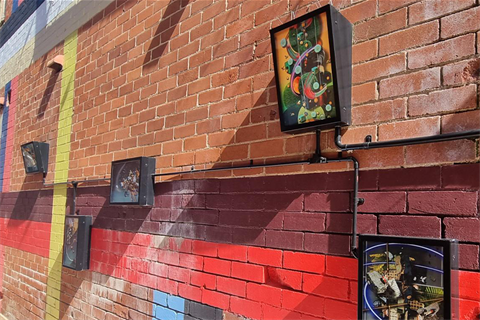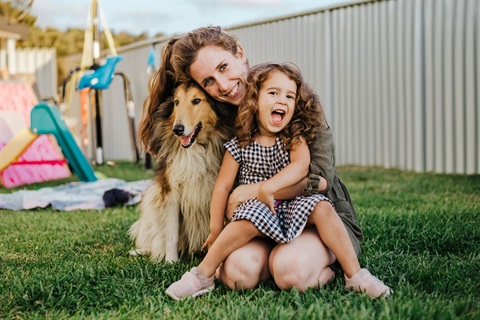 The Whitsundays tourism industry is onboard to deliver new life to damaged reefs using a citizen science version of the Coral IVF technique (Credit: Great Barrier Reef Foundation).
The Whitsundays tourism industry is onboard to deliver new life to damaged reefs using a citizen science version of the Coral IVF technique (Credit: Great Barrier Reef Foundation). The Whitsundays is piloting a tourism-led restoration of the Great Barrier Reef, working alongside Southern Cross University and the Australian Institute of Marine Science to scale-up Coral IVF.
In a world-first trial, Whitsunday tourism operators, vessel owners and the community collected coral spawn from the ocean’s surface around Hook Island during November’s annual spawning event and placed it in specially modified larvae nursery pools.
“The design was deliberately modified in size to test whether we could train local tourism operators and in future other types of citizen science groups to safely deploy a 4-metre nursery pool from their vessel,” said internationally renowned coral sex-pert Professor Harrison of Southern Cross University.
“Here at the Whitsundays we have proved this is possible, ensuring that greater coverage of Coral IVF, or larval reseeding, across the Great Barrier Reef is feasible in future. The trial shows trained citizen scientists can successfully capture coral spawn, grow larvae in pools and deploy those larvae onto the reef.
“We’ve got coral settlement to show that we’ve completed the reproductive process.”
The larval pool concept is his idea, too, and the designs have been evolving each year to improve the efficiency of spawn capture and larval culturing directly on the reef.
The citizen science version of the pool is a 4m-square inflatable pontoon lined with a 3m-square net that extends two metres below the surface to safely culture the larvae in water. A trained operator can safely and easily deploy a larval pool beside their vessel. When the larvae are ready to settle, the net is opened over target reefs.
Professor Harrison is hopeful of scaling up the Coral IVF technique in future with the support of passionate Whitsundays tourism operators who are invested in the longevity of the Reef and return of healthy coral communities.
“This was a pilot study and the idea next year is take it to different reef areas with greater number of people and therefore increase the scale of the larval culture in these smaller, manageable pools. This is how we can take Coral IVF outside the research realm and put it into the public space,” he said.
Working alongside Professor Harrison in the Whitsundays was Dr Mark Gibbs, AIMS (Australian Institute of Marine Science) Principal Systems Engineer who led the trial’s safe vessel operation training.
“The project involves working closely with Whitsundays tourism operators to take the Coral IVF technique and mainstream the approach so that it can become a standard operating procedure and set of equipment that can be applied by the tourism industry and citizen scientists to restore coral reefs,” Dr Gibbs said.
Whitsundays tourism industry onboard with Coral IVF
Whitsunday local business operators Kiana Sail & Dive, Ocean Rafting, Red Cat Adventures, and Southern Cross Sailing Adventures took part in the trial.
Sharon Smallwood, Whitsunday Charter Boat Industry Association (WCBIA) Executive Secretary, said she was proud of member companies putting their hands up to participate.
“Our marine tourism operators have a powerful connection to the Whitsunday islands and coral reefs and feel strongly about protecting their patch. Thriving coral eco-systems safeguard not just our precious underwater environment but also guarantee the future of sustainable tourism on the Great Barrier Reef,” said Ms Smallwood.
“Based on the success of (Professor Harrison’s) previous trials of this Coral IVF technique, particularly on severely degraded reefs in the Philippines, we have high hopes of upscaling and accelerating our current restoration efforts, with tangible and inspiring results.
“I am thrilled to see our marine tourism operators taking a leading role in this endeavour, and grateful to the Foundation and its partners for giving us this much-needed opportunity.”
Tourism Whitsundays Chief Executive Officer Tash Wheeler said she was thrilled to see the Whitsundays tourism industry taking the lead on the protection of one of its greatest assets.
“As custodians, we can all do our bit to protect this incredible living structure. It is great to see so many of our tourism operators leading the charge in the protection of the Great Barrier Reef,” Mrs Wheeler said.
“The Whitsundays, in the heart of the Great Barrier Reef, accounts for 40% of visitation each year through overnight sailing, day tours and outer reef experiences. The diversity between the outer and inner fringing reefs around our 74 islands is arguably one of the biggest tourism drawcards for the region. It is vital for the longevity of the tourism industry in the Whitsundays and Queensland that our industry continues to lead the way in educating visitors and protecting the reef.
“As an industry, we have to ensure that we continue to innovate and collaborate to ensure we look after this delicate eco-system.”
Reef-saving initiatives
The Coral IVF technique is just one of the more than 60 Reef-saving projects being delivered by the Great Barrier Reef Foundation right now – and is ready to be scaled up to restore local reefs.
“For the first time, tourism operators in the Whitsundays are working hand in hand with the Foundation and its scientists conducting Coral IVF on the Reefs they know and love, where they’re learning how to deploy this technique from their own boats,” said Anna Marsden, managing director of the Great Barrier Reef Foundation.
“This trial could see tourism operators leading Coral IVF all along the Great Barrier Reef during spawning events for years to come, tapping into the thousands of tourism operators and vessels keen to help save our Reef.”
Ms Marsden said the Great Barrier Reef was the largest living system on Earth, with rich corals spanning an area visible from space.
“But it’s facing a growing combination of threats and we’re already seeing the effects in many parts of our Reef. Without help the outlook is bleak, but innovations like Coral IVF give us hope.
“The Foundation immediately saw the potential of this game-changing technique and we’re proud that with our research partners we brought Coral IVF to the Great Barrier Reef in 2016, and since then it has continued to give nature a helping hand.”
Enhancing natural processes
Professor Harrison said the process of collecting spawn was simply enhancing natural processes.
“We know between the spawning event and the week-long development of coral larvae, most drift away from the parent reef through sea currents and wind, sometimes ending up as a meal for other marine creatures, and most larvae probably don’t find a reef to settle on or contribute to the next generation,” he said.
“The baby corals grown in the nursery pools are settled onto target reefs. In a few years they will grow to dinner plate size at which point they’ll sexually reproduce and create their own coral babies – re-establishing the breeding populations on damaged reefs,” he said.
“We know this technique works successfully for coral restoration of reefs damaged by bleaching and other impacts, so it’s exciting to see the methods being adapted for use by citizen scientists and we hope to expand the program throughout the GBR in future,” Professor Harrison said.
Reef Islands Initiative
This trial is part of the Great Barrier Reef Foundation’s Reef Islands Initiative. Launched earlier this year in the Whitsundays, the Reef Islands Initiative is the largest reef habitat rehabilitation project of its kind in the Southern Hemisphere. The Initiative is supported by funding from Lendlease, the Australian Government’s Reef Trust, the Queensland Government and the Fitzgerald Family Foundation.
Coral IVF
Coral IVF is just one technique being investigated as part of the Great Barrier Reef Foundation’s Reef Restoration and Adaptation Program (RRAP), which sees the Foundation bringing together the best minds and technologies to investigate new techniques to restore coral reefs and adapt them at unprecedented scales. RRAP is funded by the Great Barrier Reef Foundation’s partnership with the Australian Government’s Reef Trust.







